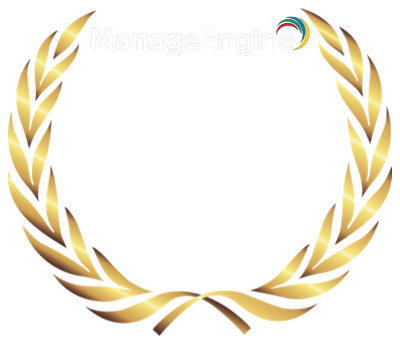One of the really nice things about ManageEngine ServiceDesk Plus is the fact you can create templates for creating requests. This helps an IT support department to define commonly reported issues and typical user requests. The fact that you can pre-define the required fields of the request improves productivity and consistency of reporting as the technician is not having to enter this data for themselves – after all ten support technicians will most likely enter the same request ten different ways!
What I noticed recently is that some clients tend to create a single list of templates. If the list is small this doesn’t really present any major issues as technicians and users alike can usually find the template they need. However, as the deployment of ManageEngine ServiceDesk Plus grows, especially if ManageEngine ServiceDesk Plus is opened up to shared departmental usage, such a list can often become unwieldy and unmanageable.
Hence the need for Service Categories! Whilst the configuration of Service Categories differs slightly between the Enterprise and Professional versions of ManageEngine ServiceDesk Plus the principle is the same for both. In essence what we are able to create is a top tier menu of Service Categories and group relevant request templates under these Service Category headings.
Let’s take a look at this from perspective of the Professional Edition of ManageEngine ServiceDesk Plus first. If we take a look under the Admin tab at Service Categories we will see something similar to the following:
Now these are essentially just labels for us to use. What we need to do is add the Service Category field and pre-define it’s value on, in the case of the Professional Edition, an Incident Template (you may find you need to drag the field from the left-hand selection menu onto the required template and set its value accordingly):
Once the Service Category field is set it will place the template under this heading of the Catalog rather than at the end of the menu list. The following gives an example of a template added to the ‘Email’ Service Category:
The other thing to bear in mind are the options for Support Group and User Groups on a template as this allows you to ‘hide’ templates from the Catalog based on who is logged in – if you remember I mentioned this in a previous post.
In the Enterprise Edition of ManageEngine ServiceDesk Plus the principle is exactly the same for Incident Templates. However, the Service Categories are configured from the ‘Service Catalog’ option under the Admin tab, you just add Service Categories as required from the drop down menu at the top of this configuration screen:
This option in the Enterprise Edition of ManageEngine ServiceDesk Plus also allows you to define Service Templates, as opposed to Incident Templates, under each Service Category. The difference being that you’ll end of with a Catalog menu that has a combination of Incident and Service Request templates:
Now the default Service Category labels tend to be very IT centric which is ok as far as it goes. My recommendation is to use phrases that are understandable by ‘non-IT’ users e.g. ‘I want assistance with system x’ or ‘I need new equipment’ tends to work far better in the menu and improves the technician and user selection of the correct templates dramatically.
Enjoy!
This article is relevant to:
Service DeskOther recent articles in the same category
You may be interested in these other recent articles
Latest Updates for ManageEngine Endpoint Central
12 December 2025
Discover the latest Endpoint Central updates, including new features, fixes, and enhancements.
Read moreLatest Updates for ManageEngine ServiceDesk Plus On-Premise
10 December 2025
Discover the latest ServiceDesk Plus updates, including new features, fixes, and enhancements.
Read moreLatest Updates for ManageEngine ServiceDesk Plus Cloud
4 December 2025
Discover the latest ServiceDesk Plus Cloud updates, including new features, fixes, and enhancements.
Read moreStay Ahead with the Latest Updates for ADManager Plus
26 November 2025
Discover the latest ADManager Plus updates, including new features, fixes, and enhancements.
Read moreStay Ahead with the Latest Updates for ManageEngine Analytics Plus
21 November 2025
Discover the latest ManageEngine Analytics Plus updates, including new features, fixes, and enhancements.
Read more




